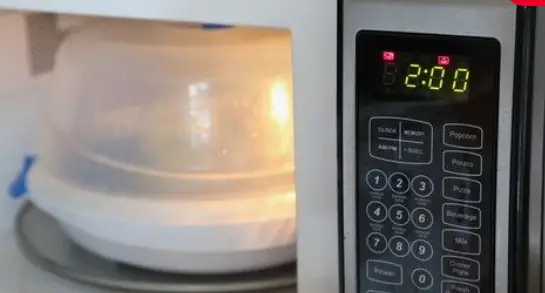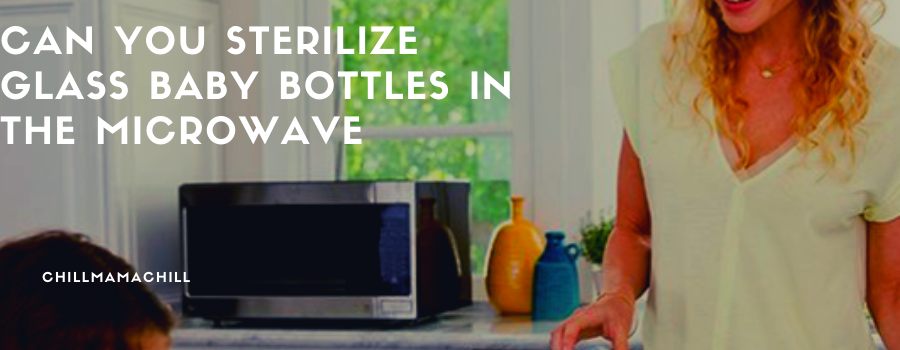Your topmost priority is keeping your little one safe and healthy. This is why the baby’s feeding equipment should be kept clean and sterile. But can you sterilize glass baby bottles in the microwave?
Yes, you can sterilize glass baby bottles in the microwave. Sterilizing baby bottles in the microwave is a quick and easy way to kill any disease-causing bacteria or germs present in the bottles. You can place the bottles directly or use a microwave sterilization unit.
Sterilizing baby bottles is a vital aspect of caring for your kid in those first few months. In this hygienic handbook, you’ll learn how you can sterilize glass baby bottles safely in the microwave.
How to Sterilize Glass Baby Bottles in the Microwave
Just because something looks clean doesn’t mean that it is safe for the baby’s use. It might contain harmful pathogens and minute specks of dirt invisible to the naked eye. This is why you must go the extra mile beyond just washing the glass bottles with soap and water.
Cleaning and sterilization are separate processes. While cleaning aims to eliminate foreign particles such as formula, milk, and dirt, sterilization kills pathogenic (disease-causing) germs and removes the majority of organisms from the surface of baby bottles and other feeding accessories. Sterilization has been proven to kill off bacteria and germs, effectively protecting your munchkin from diseases like gastroenteritis.

We often use the microwave, a common household appliance, to warm leftover food, poach an egg, or make popcorn. But did you know it can also sterilize glass baby bottles?
How Does It Work?
After placing the bottles in the microwave, the high heat produced warms the water in the bottles or sterilizer, causing it to boil and evaporate. The steam then sterilizes the baby bottles. Several factors influence the time needed for sterilization, such as:
- The microwave make and model
- The type of microwave sterilizer you have
- The number of bottles in the unit
How to Sterilize Baby Bottles in the Microwave
Method 1: Direct Application
If you do not have a sterilization unit, you can put the baby glass bottles directly into the microwave. This is the simplest method, and sterilization occurs through steaming. It begins to vaporize as the water is heated, effectively sanitizing the bottle.
- Ensure the microwave is clean. It defeats the whole purpose if you begin with a dirty microwave.
- Clean the bottles of any dirt or residue.
- Fill the glass bottles halfway with water.
- Place any rubber nipples and other accessories in a glass bowl filled with water deep enough to cover them.
- Run the microwave for 1-2 minutes on the’ high’ setting.
- Let them cool before removing them. Always sanitize your hands before handling the bottles at this stage.
However, before you put the bottles in the microwave directly, ensure they are safe to do so. Otherwise, you risk damaging them. Read the packaging or the instruction manual that came with the glass bottles to confirm this. Some people claim that you should avoid putting baby glass bottles directly in the microwave because it doesn’t effectively sterilize the bottles, rings, and teats.
Method 2: Microwave Steam Sterilizer
You’re probably wondering, “How can you sterilize glass baby bottles in the microwave with a sterilizer.” It turns out there are sterilization units explicitly made for microwave use, and here’s how to go about it.
- Make sure the microwave is clean.
- Wash the bottles with warm, soapy water
- Put the specified amount of water in the sterilizer
- Place bottles, nipples, and rings in the sterilizer’s dome-shaped compartment
- Shut the lid and place it in the microwave
- Set heat according to manufacturer’s instructions and run for 2-4 minutes
Always pay attention to the manufacturer’s recommendations, especially regarding the recommended microwave’s power level. You’re putting the baby’s bottles and nipples at risk of melting. You can store unused bottles in the sterilizing unit as long as it is kept covered.
What Can You Sterilize?
It’s best if you sterilize all baby feeding equipment. This includes feeding bottles and all accompanying parts, such as seals, lids, collars, nipples, and any other containers you use. This consists of all components of your breast pump if you express breast milk. Depending on the brand you use, follow the manufacturer’s instructions. And remember to check whether you can sterilize the breast pump parts in the microwave. Don’t forget to sterilize the pacifiers.
When Should You Sterilize Glass Baby Bottles?
Before First Use
Before you use the bottle for the first time, you must sterilize it. The nipple and attachment rings should be sterilized as the rest of the bottle. This eliminates all the dirt and germs from anyone who touched it before buying it.
After Every Use
Because your child’s immune system is weaker during the first six months postpartum, you should sterilize glass baby bottles in the microwave after each use. You can gradually reduce the frequency of sterilizing the bottles after every few uses as your youngster grows.
If Your Child Has an Infection
Suppose your tot has an illness, such as oral thrush, you must sanitize their bottles and anything they put in their mouth.
Whenever There’s Build-Up
When you notice residue inside the bottle or on the nipple, it’s time to sterilize. Caked-on residue indicates the possible presence of microorganisms that may make your little treasure sick.
When Traveling
The place you go for vacation may have an unregulated water source. This means that regular cleaning is insufficient. Luckily, some modern villas and serviced apartments have a microwave that you can use. If they don’t, look for an alternative solution such as boiling.
In Summary
Sterilizing your baby’s bottles is one way of protecting your little one from germs and harmful bacteria. Suppose you’re still wondering if you can sterilize glass baby bottles in the microwave; research proves that microwave sterilization is not only practical but also economical and environmentally friendly, making it one of the safest ways to keep glass bottles germ-free.

I’m Cathrine and I’m a 39-year-old mother of 3 from Utica, New York. And I’m extremely happy you’ve come to visit my hide-out on the web. Here I post about everything related to family-life and usually it will involve babies and lessons I’ve learned over the years from experts, friends, and my own mistakes. So hopefully you will find what i write fun and informational!

